Course Information
Layered Process Audits Training
Learners will be able to:
- Describe what Layered Process Audits are and the benefits LPAs can trigger.
- Use a proven 10-step approach to plan and rollout LPAs.
- Help select or recommend team members for all audit layers.

About This Course
What are Layered Process Audits?
LPAs are a unique technique designed to help improve organization-wide performance by engaging all levels or “layers” of the organization. The LPA approach is a proven means to help align the entire organization on Key Performance Indicators, reinforce the responsibilities and accountabilities of all “layers” to meet those objectives and help identify opportunities to improve processes and their performance.
The term “Layered Process Audit” does not refer to a conventional internal audit but rather represents a technique that calls for short, focused audits performed by multiple levels (or layers) of the organization. LPAs involve a wide range of people from the organization engaged in verifying the viability of selected processes, not a small team of internal auditors. This approach helps align the organizational “layers” into a continuum where all understand what is important to ensure outcomes are successful and that all members are committed to making it happen.
Layered Process Audits (LPA) training helps the learner understand what LPAs are and how to use them. Participants will learn how to plan a comprehensive LPA program, develop a rollout strategy, conduct LPAs, make sure outcomes are assessed and the methodologies are continually improved. This course covers the steps for conducting an LPA while taking learners through examples that help bring the concepts to life.
Give Your Team the Layer Process Audit Tools They Need
Layered Process Audits Training prepares people to serve on LPA teams. The course provides a foundation for conducting LPAs to assure that all those involved in the LPA have a common understanding of the process. If LPAs are just being implemented in your organization, this is a great way to get every “layer” of the organization using the same language and steps. It is also an excellent way to bring new members joining existing LPA teams up to speed quickly, efficiently and inexpensively.
Upon successful completion of this training, participants will have a solid comprehension of the purpose, objectives and benefits of LPAs and will be prepared to carry out the responsibilities of their role. They will know the purpose and process for each layer of the process audits.
- None.
- English (EN-US)
- Chinese (simplified) (ZH)
- Czech (CS)
- French (FR)
- German (DE)
- Italian (IT)
- Japanese (no audio) (JA)
- Korean (no audio) (KO)
- Polish (PL)
- Portuguese (Brazilian) (PT-BR)
- Romanian RO)
- Russian (RU)
- Spanish (ES)
- Vietnamese (no audio) (VI)
Course Objectives
Lesson 1 | Explaining Layered Process Audits
- Provide an overview of what Layered Process Audits are and how they work.
- Preview the benefits of conducting Layered Process Audits.
Lesson 2 | Planning a Layered Process Audit
- Become aware of a proven 10-step plan to develop an LPA program.
- Understand the roles of the LPA Planning Team the Overall Process Owner and Local Process Owners.
Lesson 3 | Preparing to Rollout LPAs
- Help Process Owners comprehend their role and how to carry it out.
- Understand how to develop questions for a Layered Process Audit.
- Realize what is involved in a Rollout of the LPA approach.
Lesson 4 | Conducting a Layered Process Audit
- Know how to establish the frequency of audits and set the audit frequency for each Layer.
- Realize the role of preformatted LPA Check Sheets.
- Recognize the value of visual data displays of audit results.
- Understand the periodic reviews and adjustments necessary to retain the viability of the program.
Lesson 5 | Helpful Tips for LPAs
- Be aware of tips and techniques that can lead to more effective Layered Process Audits and successful outcomes.
Challenge
- An assessment of the learner’s progress in this course.
Course Outline
- Understand what a Layered Process Audit is and recognize the benefits it can bring to an organization.
- Be aware of a proven 10 step approach to plan, develop and rollout LPAs.
- Know how to select audit teams of all layers and get them up to speed.
- Realize how to monitor results, track progress, and make adjustment to the LPA program.

4.8 out of 5 stars
Comments from Learners About This Course
- It is a very useful course to train auditors on LPA.
- I found this course to be informative and useful. This course would be a good learning tool for layer 2.
- Good way to organize more LPA activities.
- Excellent course: 5 stars. Being a “conventional” internal auditor for 22 years this course material was totally new to me.
- Great overview of LPAs and how to develop the audit system from the ground-up.
You may also be interested in…
- Internal Audit Training – Focused on the six steps of a clause-based internal audit process.
- Root Cause Analysis with Corrective Action – Leads the learner through a four-step process to get to the root cause (source) of problems to eliminated problems for good.
- The Five Whys – Focused training in how to use the Five Whys technique to get to the root cause of problems.





